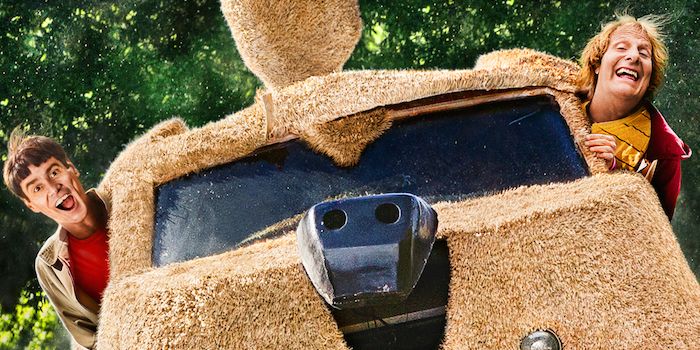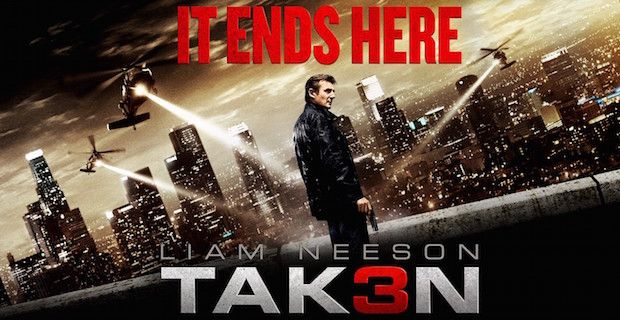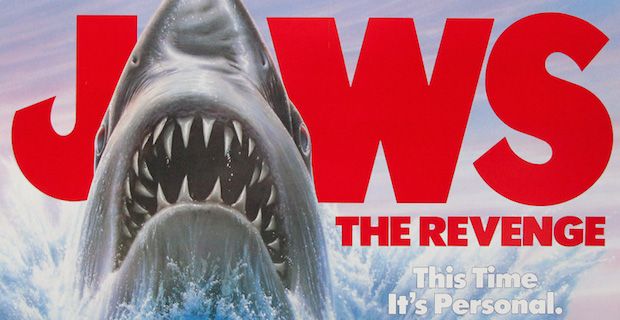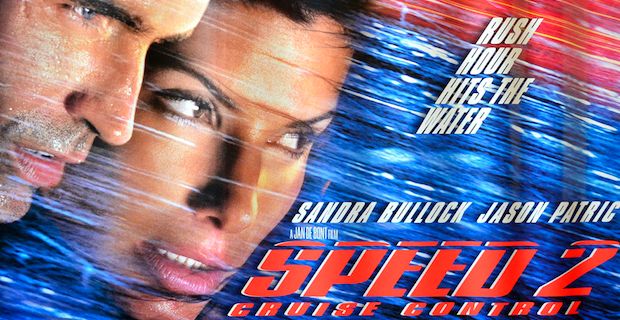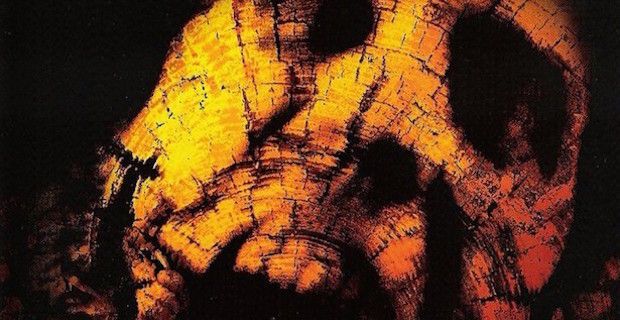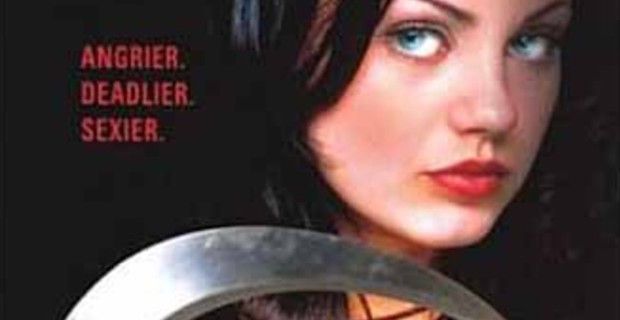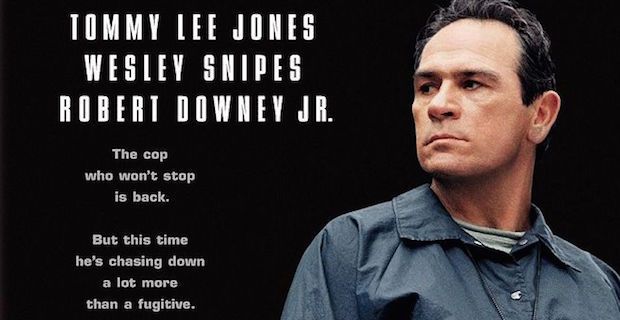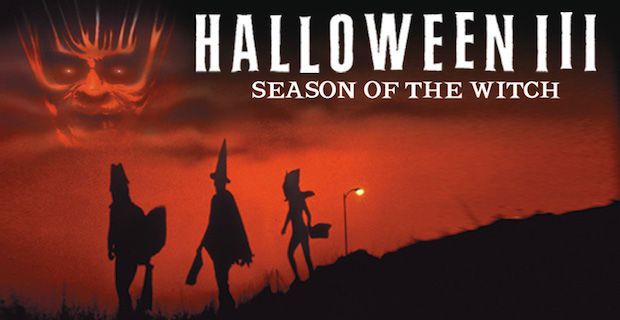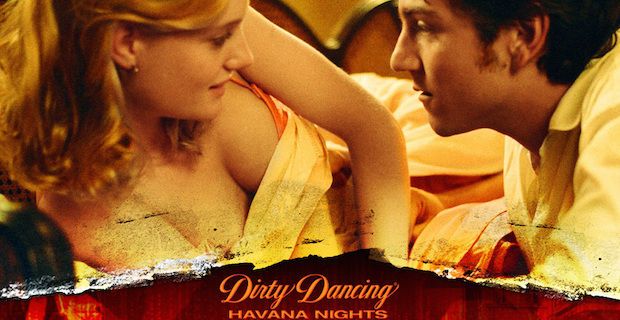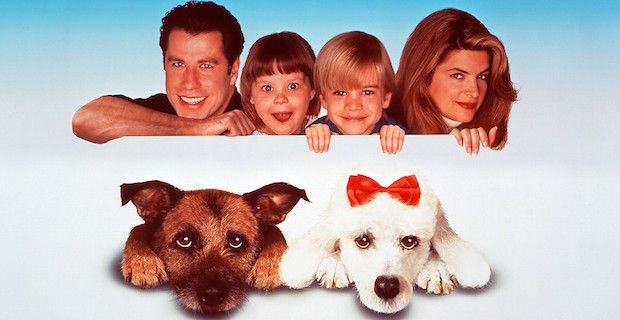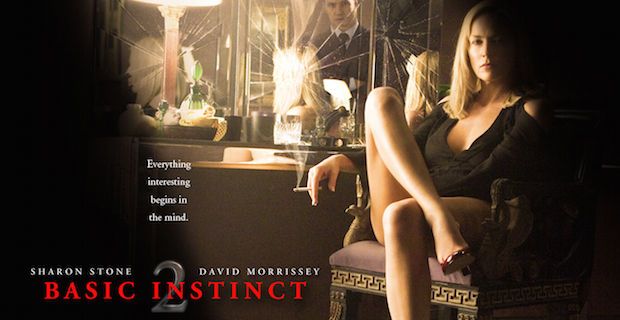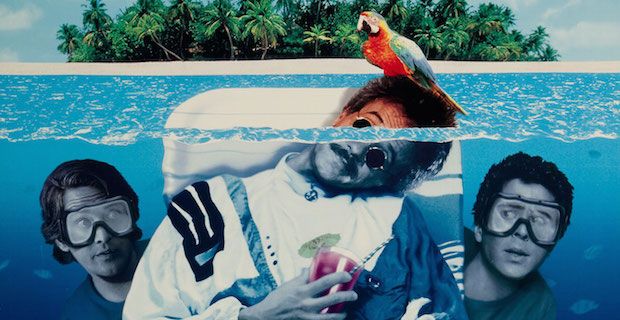In an industry that has become outright dominated by remakes, adaptations, and sequels, there's nothing more revitalizing than entirely fresh stories brought to the big screen with solid performances and sharp filmmaking. While toy-based actions films (Transformers) and young adult romance movies (Twilight) have found record-breaking success at the box office, for many cinephiles, original films, the ones that depict bold adventures (Inception), relatable human drama (Chef), tense supernatural horror (The Babadook), and hilarious comedy setups (Neighbors), ultimately prove to be the most memorable and satisfying - not to mention the main reason that recurrent movie-lovers continue to support local theaters.
Many of Screen Rant's Favorite Films of 2014 (Birdman) as well as our Most Anticipated Movies of 2015 (The Hateful Eight) were, and are, original projects - though, admittedly, we enjoy our fair share of franchise properties too. That said, 2015 is not off to a great start - punctuated by two high profile follow-ups to stories that, frankly, never warranted a sequel. Both The Woman in Black (2012) and Taken (2008) delivered self-contained movie experiences with the right blend of filmmaking and intriguing setup to score solid responses from many critics and moviegoers alike - only to be undermined (to near-parody) via Hollywood's attempt to turn successful films into full-on multi-picture franchises (e.g., The Woman in Black 2: Angel of Death and Taken 3).
Which got us thinking, what other great movies has Hollywood shamelessly blown-out in an attempt to double-dip (or even quintuple-dip) with a longer franchise. To be clear, our list is composed of "Great Movies That Never Needed a Sequel" - and is not a roundup of the "Worst Movie Sequels" (meaning: No Highlander II). Whereas Star Wars: Episode I may have been an underwhelming prequel, most viewers agree that there's still plenty of room to explore the Galaxy Far, Far Away. Instead, these are quality films that simply did not have enough meat on the fundamental premise to be stretched onto additional franchise installments - and, while some made money for their respective studios, any new income came at the expense of the original film's initial integrity.
Of course, our list is not all-inclusive, so feel free to share your own list of great movies that never needed a sequel in the comment section.
-
Taken/Taken 2/Taken 3
Why Taken Was Successful: The original Taken featured a straightforward setup - allowing plenty of time for Bryan Mills (and actor Liam Neeson) to showcase his "very particular set of skills". Following the unforgettable scene where, calm under pressure, Mills says to his daughter, Kim (Maggie Grace), "They're going to take you", director Pierre Morel captured a tour de force of exciting action set pieces as well as a capable but often pragmatic protagonist. For all intents and purposes, Kim was little more than a MacGuffin-like object, driving the battle between ex-CIA agent Mills and international sex traffickers - placing the focus entirely on the goal at hand, along with the film's dangerous (and ruthless) hero, without getting bogged down in unnecessary details.
Why Taken Doesn't Work As A Franchise: In the subsequent sequel (and trilogy-capping third entry), the core Taken premise is stretched to the breaking point, undermining the simplicity that made the original (and Mills) so intriguing. Beholden to its roots, the sequel attempted an interconnected (and downright convoluted) tale that forced Mills to unpack his "skills" after his ex-wife, Lenore (Famke Janssen), is "taken" by sex-trafficker parents looking for revenge. Knowing that he couldn't simply add a third victim to be taken in the next chapter, Taken 2 helmer, Olivier Megaton, kills Lenore off at the beginning of Taken 3 to galvanize Mills back out of retirement (while entirely undercutting his efforts in the previous chapter). As a result, since Taken 2 labored under the central premise, in trying to keep the franchise rolling, Taken 3 completes Mills' (and the series') transition into a bland ex-CIA operative cliche - with neither film providing moviegoers a single moment more memorable or entertaining than anything in the original installment.
-
Jaws/Jaws 2/Jaws 3/Jaws: The Revenge
Why Jaws Was Successful: Similar to Taken, the Jaws series started off with a relatively straightforward premise - brought to the big screen by one of film's most talented (and later famous) directors. Like any great horror-thriller, Spielberg used patience and restraint to terrify his audience, making the very idea of his killer shark even more frightening, by treating viewers to only fleeting glimpses of the titular monster. The story itself was compact, based on the novel by Peter Benchley, providing uncluttered drama as marine biologist Matt Hooper (Richard Dreyfuss) and police chief, Martin Brody (Roy Scheider) investigate a series of grisly deaths at a local New England beach.
Why Jaws Doesn't Work As A Franchise: The fate of the shark (and the human characters) is cleanly wrapped-up in both the novel source material as well as first movie - and Benchley never wrote a second book installment. Nevertheless, despite Spielberg's feelings (at the time) that "making a sequel to anything is just a cheap carny trick," producers pressed on with Jaws 2. In the years that followed, the straightforward tale of a killer shark would lead to three sequels - where, one after another, (oversized) great whites continued to threaten beachgoers. To that end, filmmakers watered down the core man vs. nature themes in favor of horror cliches - stretching the one-off premise to a point of absolute absurdity: including human-to-shark psychic connections and above water attacks on helicopters, among other ridiculous ideas that tried, desperately, to add new aspects to an otherwise standalone concept.
-
Speed/Speed 2: Cruise Control
Why Speed Was Successful: Jan de Bont's Speed effortlessly combined two setups that moviegoers love: hostage situations and car chases - as Los Angeles SWAT officer Jack Traven (Keanu Reeves) attempts to evacuate hostages from a bus rigged with explosives (should the speed dip below 50 miles/hour). It's an intriguing setup from the outset but Speed also managed to payoff its premise with equally exciting action moments. Modern viewers may scoff at the bridge-jump scene but the high speed evacuation set piece, coupled with smart story twists, and solid chemistry between Reeves and co-star Sandra Bullock, ensured that Speed did not simply rest on a clever premise (or quotable catch phrases: "Pop quiz Hot Shot").
Why Speed Doesn't Work As A Franchise: Unfortunately, the same could not be said for the sequel: which, once again, sees Bullock's character, Annie, aboard a doomed/speeding vehicle - this time a cruise ship programmed to collide with an oil tanker. Whereas Speed was a mostly original screenplay idea by Graham Yost (Justified), aided by significant rewrites from future Avengers director Joss Whedon, Reeves and the original writing team did not return for the sequel - leaving new scripters, Randall McCormick and Jeff Nathanson, to find a fresh angle (Speed on the open seas) that could also retain enough of the original setup to satisfy returning filmgoers - while also introducing an entirely new male lead (Jason Patric). The result was a lazy paint by numbers sequel that outright undermined the featured pairing/relationship of its far superior predecessor. Maybe "relationships that start under intense circumstances" never last after all?
NEXT PAGE: An All American Girl, a Book of Shadows, and more!
-
The Blair Witch Project/Book of Shadows: Blair Witch II
Why The Blair Witch Project Was Successful: Looking back, The first Blair Witch Project may not have, itself, retained popularity/watchability but there's no doubt that the film helped put found footage horror on the map. It wasn't the first found footage film (Cannibal Holocaust), nor the scariest, but coupled with clever marketing that claimed the film's unknown leads (Heather Donahue, Michael C. Williams, and Joshua Leonard) actually went missing, The Blair Witch Project became a commercial hit, and pop culture sensation, in the year of its release (1999).
Why The Blair Witch Project Doesn't Work As A Franchise: Some moviegoers remain underwhelmed by the original film, regardless of its longterm contributions to the genre, since the movie relied heavily on creepy moments of darkness and shaky cam, rather than reveals. While the first film hinted at interesting potential in the series' mythology, it never injected enough concrete details to make the story payoff - much less set the stage for a completely underwhelming sequel. Strangely, the follow-up contained little found footage - removing the main draw of The Blair Witch Project in favor of turning the witch into a polished horror icon. Unfortunately, without tangible story development (or even scary moments), Book of Shadows merely highlighted that, from the beginning, The Blair Witch Project was a gimmicky (albeit creative) piece of filmmaking - that lacked in enduring character or supernatural substance.
-
American Psycho/American Psycho II: All American Girl
Why American Psycho Was Successful: Based on the critically acclaimed novel by Brett Easton Ellis, American Psycho was an unnerving portrait of materialism, capitalism, and misogyny at its most schizophrenic extreme. Thanks to an all-star cast, including a blood soaked, chainsaw-wielding, nude performance from Christian Bale, and sharp black-comedy direction from Mary Harron (I Shot Andy Warhol), American Psycho remains, to this day, one of the most captivating tales of madness ever put to film. Even though Harron condensed the 400 page Ellis novel (which contains an entire chapter in which Patrick Bateman discusses his musical tastes, including Huey Lewis, Phil Collins, and Whitney Houston) down to a tight 102 minute movie, plenty of themes and memorable moments ("I can't believe that Bryce prefers Van Patten's card to mine.") remain entirely intact - often word-for-word from the text.
Why American Psycho Doesn't Work As A Franchise: That said, at its center, American Psycho is still just a movie about a disturbed and murderous man - one that happens to be a wall street executive. For that reason, an American Psycho franchise is little more than a collection of related stories about other disturbed and murderous individuals. Given that Hollywood is full of films about serial killing psychos, there's nothing (on the surface) that sets American Psycho, as a movie series, apart - especially since Patrick Bateman (played by Michael Kremko) only has a very thin connection to the new psycho, Rachael Newman (Mila Kunis), in American Psycho 2. Instead, Rachael is little more than a vindictive/cliche villain - with uncomplicated motivations (and, subsequently, incapable of providing the thematic insight that made the original film/book so engaging).
-
The Fugitive/U.S. Marshals
Why The Fugitive Was Successful: Andrew Davis' The Fugitive, based on the 1960s TV series (starring David Janssen as Richard Kimble), followed the case of a successful doctor (Harrison Ford) who is forced to flee custody - after he is framed for the murder of his own wife. In an effort to clear his name, and bring the "one-armed man" that actually killed his wife to justice, Kimble refuses to cooperate with police - placing him in the crosshairs of Deputy U.S. Marshal Samuel Gerard (Tommy Lee Jones). Davis, along with screenwriters Jeb Stuart and David Twohy, successfully updated the story for modern moviegoing audiences - providing a smart cat-and-mouse chase, as well as genuinely intriguing character drama, between Kimble and Gerard.
Why The Fugitive Doesn't Work As A Franchise: However, after Kimble and Gerard solve the case, there's nothing left in The Fugitive film universe that couldn't have been covered in an entirely separate project. Gerard (played once again by Tommy Lee Jones) is the only returning star - and, despite his past experience, there's nothing notable about the Marshal, besides eye-rolling brand recognition ("This time he's chasing down a lot more than a fugitive"), that ties back to the original film. Instead, filmgoers get a generic U.S. Marshal movie, full of underwhelming twists (which prey upon audience expectations), that places the third most interesting Fugitive character in the central spotlight - with only fleeting references to Gerard's previous misadventure with Kimble to service returning fans.
-
Halloween & Halloween 2/Halloween III: Season of the Witch/Halloween 4: The Return of Michael Myers/Halloween 5: The Revenge of Michael Myers/Halloween: The Curse of Michael Myers/Halloween H20: 20 Years Later/Halloween: Resurrection
Why Halloween and Halloween 2 Were Successful: While many filmgoers now recognize Halloween baddie Michael Myers as a classic horror monster, the first two Halloween movies (both written by Debra Hill and John Carpenter) positioned the villain as a determined but still human serial killer - with a very clear motivation: murder his younger sister, Laurie (Jamie Lee Curtis), on Halloween (the same day that he murdered his older sister, Judith, 15 years earlier). The first two Halloween stories delivered a creepy two-part psychological horror, with a few fun twists and plenty of jump scares in the mix, but came to a clear and satisfying conclusion - when Laurie and Dr. Sam Loomis (Donald Pleasence) cause an explosion that scorches (and kills) Myers. It was a haunting but self-contained character drama that developed Michael Myers into a formidable psychopath (without slipping into stock horror genre outlines).
Why Halloween Doesn't Work As A Franchise: Given that Michael Myers wasn't presented with overt supernatural abilities (yet), writer/director Tommy Lee Wallace didn't even use the character in Halloween III: Season of the Witch; instead, deciding that the only key ingredient for a Halloween film is that it takes place on the titular holiday. However, when Season of the Witch was derided by critics and moviegoers alike, director Dwight H. Little determined that a Halloween movie needed to include Michael Myers - and brought the presumed dead character back. Halloween IV: The Return of Michael Myers marks the point at which the series rebrands Myers as a quasi-supernatural threat (after he survives being burned alive as well as regrows an eye that Laurie shot-out in Halloween II) - only to see the franchise spin out of control in subsequent chapters with retconned story beats, conflicting timelines, and a full on remake. While Halloween might have "needed" a sequel, and audiences got one in Halloween II, each film that followed wasn't nearly as inventive, scary, or coherent as Hill and Carpenter's original creation.
NEXT PAGE: Havana Nights, Risk Addiction, and more!
-
Dirty Dancing/Dirty Dancing: Havana Nights
Why Dirty Dancing Was Successful: It might not have been the deepest story of romance and youthful defiance but, thanks to quality performances from leads Patrick Swayze and Jennifer Grey as well as snappy dance choreography, Dirty Dancing, remains a classic film staple. While the movie was armed with memorable lines ("No one puts Baby in the corner") and an engaging cross-economic class love story, Dirty Dancing set itself apart from standard romantic dramas by putting the transformative power of dance (and artistic expression) front and center - in a time when societal norms still forced parents to be skeptical (and overly protective) of youth culture. Much like Footloose, Dirty Dancing offered a relatable platform for 1980s teenagers and a clear example to older moviegoers that (dirty) rock 'n roll might be more than just sex and drug use - it could be liberating.
Why Dirty Dancing Doesn't Work As A Franchise: That said, while Dirty Dancing included a layered story, times (and culture) have changed dramatically since the stuffy setting (an affluent Catskill Mountain resort) of the 1987 film. While modern parents can still smother their children, mobile phones and social media have provided abundant outlets for self-expression (and defying protective parents). As a result, the 2004 spin-off Dirty Dancing: Havana Nights comes across as a completely shallow cash grab on a well-known brand. The film features a familiar premise (sheltered girl gains confidence in the arms of a handsome and street-smart dance partner), but without any returning characters or through lines, Havana Nights is little more than a copy and paste job - set in a different location/time. Yet, the film's biggest shortcoming is that while Dirty Dancing injected a worthwhile look at the challenges of 1980s teenagers, Havana Night's outdated setup leaves little room for meaningful conversation about millennial culture - especially in comparison to superior (and more timely) romance/dance dramas (Step Up, Save the Last Dance, etc).
-
Look Who's Talking/Look Who's Talking Too/Look Who's Talking Now
Why Look Who's Talking Was Successful: Look Who's Talking relied on a clever, albeit silly, setup - for a harmless piece of popcorn fun. The film follows the story of James (John Travolta) and Mollie (Kirstie Alley), a future husband and wife pair, who begin to fall in love when Mollie is left to care for her newborn son, Mikey, alone - after the boy's father (George Segal) waves his paternal responsibility. However, what separates Look Who's Talking from other unplanned pregnancy comedies, is the inclusion of Mikey's perspective on every melodramatic twist - via internal commentary (voiced by Bruce Willis). Since Look Who's Talking contains some, comparatively, heavy material (illicit affairs and an out of wedlock pregnancy), the addition of Mikey's innocent, but insightful, thoughts on all of the key players - including his slimy paternal father (Albert) and far superior father-figure (James) - provided a light-hearted platform to unpack otherwise uncomfortable subject matter.
Why Look Who's Talking Doesn't Work As A Franchise: Given the success of the first film (critically and commercially), it's unsurprising that creator/director Amy Heckerling double-dipped on the premise with Look Who's Talking Too - where Mikey is joined by younger sister, Julie (voiced by Roseanne Barr), as well as a friend, Eddie (Damon Wayans), to comment on the still complicated adult lives of James and Mollie. While one sequel alone was unnecessary (and panned by critics), the studio pushed their franchise to a breaking point, not to mention muddled the baby-talking foundation of the series, with Look Who's Talking Now. Since Mikey (David Gallagher) and Mollie (Tabitha Lupien) were old enough to talk by the time the third film hit theaters in 1993, new director Tom Ropelewski chose to add a pair of canine protagonists, Rocks (Danny DeVito) and Daphne (Diane Keaton), to comment on the Ubriacco family. Given that third film was more akin to Homeward Bound than Look Who's Talking, it is now clear the core series concept wasn't as versatile as the studio had thought.
-
Basic Instinct/Basic Instinct 2: Risk Addiction
Why Basic Instinct Was Successful: Some moviegoers will be crass about why exactly Basic Instinct was so successful but, beyond the near-NC-17 sexual content of the theatrical release (TriStar Pictures would later release the full uncut version on home video), Paul Verhoeven's film is actually an intelligent neo-noir erotic thriller. Quality performances from Michael Douglas and Sharon Stone, as well as intriguing twists ensured that, irrespective of the nudity, sex, and violence, Basic Instinct was rooted in engaging (and outright disturbing) character drama. Even though many moviegoers will best remember crime novelist Catherine Tramell for her infamous leg crossing sequence, Verhoeven and Stone actually delivered a surprisingly layered (and potentially lethal) woman - a femme fatale who was much more intelligent than her male counterparts and knew precisely how to manipulate them to her advantage.
Why Basic Instinct Doesn't Work As A Franchise: Basic Instinct's success was in its execution, since a less explicit core version of the storyline could have easily appeared on a network police procedural. Conversely, Basic Instinct 2: Risk Addiction was determined to focus on its predecessor's most bankable (though vapid) draw - sexualizing Sharon Stone. To that end, Tramell is turned into a cliche, a hollow outline of the formerly layered character. Where Basic Instinct was a solid thriller, Risk Addiction is an eye-rolling attempt to squeeze more money out of a standalone character drama - making the series most intriguing figure less interesting in the process (while also revealing that the studio has about as much respect for Verhoeven's original feature as an oversexed teenage boy).
-
(Dis)Honorable Mentions
There are plenty of great movies that never needed a sequel (that we didn't have a chance to include) but here are few more that we wanted to highlight:
- Weekend at Bernie's/Weekend at Bernie's II
- Die Hard/Die Hard 2/Die Hard with a Vengeance/Live Free or Die Hard/A Good Day to Die Hard
- Saturday Night Fever/Staying Alive
- Dumb and Dumber/Dumb and Dumberer: When Harry Met Lloyd/Dumb and Dumber To
- The Hangover/The Hangover 2/The Hangover 3
- A Christmas Story/A Christmas Story 2
MORE: Screen Rant’s Worst Movies of 2014
-
As mentioned, our list is not all-inclusive, and we're interested to hear which great movies you believe never needed a sequel. Share your picks in the comments!
Follow me on Twitter @benkendrick for future features as well as movie, TV, and gaming news.

